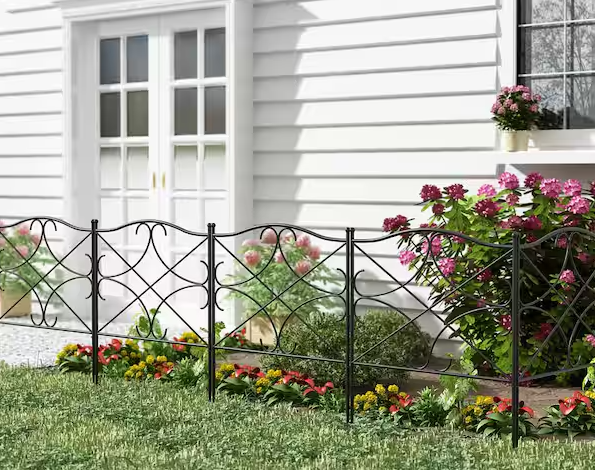How to Build a Vegetable Garden Fence

Building a vegetable garden fence is not only an essential step in protecting our precious plants but also a rewarding endeavor that adds a touch of charm to our gardening space. At Critterfence, we’ve spent years honing our expertise in fencing solutions, and we’re excited to share our insights on how to build a vegetable garden fence that will keep those pesky critters at bay while enhancing the beauty of our garden
Understanding the Need for a Fence
First and foremost, let’s discuss why we need a vegetable garden fence. Gardens are a feast for the eyes and a delightful source of fresh produce, but they can also attract unwanted guests. From rabbits nibbling on our tender greens to deer making off with our tomatoes, the list of potential pests is long. A well-constructed fence serves as a protective barrier, allowing us to cultivate our gardens with peace of mind.
Moreover, a fence can help define our garden space, giving it a structured look. It can be a canvas for creativity, as we can choose materials and designs that reflect our personal style. Whether we prefer a rustic wooden fence or a sleek metal option, the choices are plentiful.
Choosing the Right Materials
When it comes to how to build a vegetable garden fence, the materials we select play a crucial role. We need to consider the types of animals we want to keep out, as different critters require different approaches. For instance, a fence designed to deter rabbits might look different from one meant to keep deer at bay.
Let’s start with height. For rabbits, a fence that stands at least 2 to 3 feet tall is typically sufficient. However, if we’re concerned about deer, we need to elevate our game and aim for a fence height of 6 to 8 feet. This distinction is vital as deer are more adept at leaping over obstacles.
Next, we should focus on the strength of the materials. Metal fencing is a popular choice due to its durability and effectiveness. A galvanized steel mesh with a small opening size, around 1 inch, is ideal for keeping out smaller animals like rabbits and groundhogs. For larger animals, a 2-inch mesh can also work well.
Another option is poly fencing, which can be lightweight and easy to install. However, we must ensure it has a higher breaking strength, ideally over 650 pounds per linear foot, to withstand the pressure from larger animals.
Planning the Design
Once we’ve settled on materials, it’s time to plan the design of our vegetable garden fence. The layout should consider the shape of our garden and any specific challenges we might face, such as uneven terrain or nearby trees that could encourage climbing animals.
Here’s a tip: creating a slight overhang at the top of the fence can help deter animals like cats and raccoons that may try to climb over. Additionally, we should consider incorporating a bottom fold or tension cable to prevent animals from digging underneath the fence.
Installing the Fence
Now that we have our materials and design in place, the installation process can begin. Here’s how we can proceed:
- Mark the Boundary: Use stakes and string to outline the perimeter of the fence. This will help us visualize the space and determine how many materials we need.
- Digging the Post Holes: We’ll want to dig holes for the fence posts, ensuring they are deep enough to provide stability. A good rule of thumb is to aim for a hole depth of about 1/3 the height of the fence.
- Setting the Posts: Place the posts in the holes, ensuring they are level and spaced appropriately—keeping in mind that posts should be no more than 8 feet apart for added strength. We’ll use concrete or gravel to secure them in place.
- Attaching the Fencing: Once the posts are set, we can start attaching the fencing material. If we’re using metal fencing, it’s essential to use fence ties or staples to secure the mesh firmly to the posts. For poly fencing, we can use the same method or consider using tensioning hardware to keep it taut.
- Finishing Touches: After the fencing is installed, we can add any additional features like gates for easy access. It’s crucial to ensure that the gates close tightly to prevent any escape or entry.
Maintaining Our Fence
After we’ve built our vegetable garden fence, the work isn’t over yet! Regular maintenance is key to ensuring its longevity and effectiveness. We should periodically check for any damage, such as holes or sagging areas, and repair them promptly.
Additionally, keeping the area around the fence clear of debris and vegetation can help deter animals from finding footholds or hiding spots. A well-maintained fence not only looks great but also serves its purpose more effectively.
Embracing Our Garden Space
Building a vegetable garden fence is an investment in our gardening journey. Not only does it protect our plants, but it also allows us to express our creativity and create a welcoming environment. As we stand back and admire our handiwork, we can take pride in knowing that we’ve taken significant steps toward safeguarding our beloved garden.
In summary, by choosing the right materials, planning our design thoughtfully, and maintaining our fence diligently, we can build a vegetable garden fence that stands the test of time. Here at Critterfence, we’re proud to support your gardening endeavors with expert advice and high-quality fencing solutions tailored to meet your needs. Happy gardening!



